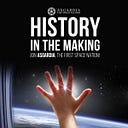SpaceX’s Falcon 9 is Officially Certified by NASA to Launch its Most Valuable Scientific Spacecraft
SpaceX’s Falcon 9 (likely F9 v1.2) has been officially certified by NASA to launch the space agency’s most valuable and vital scientific spacecraft. This could allow SpaceX to routinely compete for missions comparable to Hubble Space Telescope, the Curiosity Mars rover (Mars Science Laboratory), Cassini (a Saturn orbiter), and James Webb Space Telescope, among various others.
SpaceX is coming close to it’s 35th successful consecutive launch for it’s Falcon family, and now this certification functions as a practical endorsement of all the hard work SpaceX has put into optimizing Falcon 9 for performance and reliability.
Even though Falcon 9 can perform awe-inspiring feats beyond Earth orbit, that performance is made truly competitive with ULA’s Atlas V rocket when Falcon 9 is deployed as a wholly expendable vehicle. What’s more, both Falcon 9 and Falcon Heavy are almost guaranteed to cost much less than the Atlas V, even assuming no recovery attempt is made.
Due to the rarity of such valuable NASA launches, usually no more than two per year at best, SpaceX would surely be thrilled to expend as much hardware as needed to give NASA a competitive offer for the performance they require.
Yet, the fact is that most — if not all — of NASA’s high-value “Class A or B” missions end up being extremely heavy spacecraft, either because of large and expensive scientific instruments, the necessity for lots of extra onboard fuel, or a combination of the two.
For example, Cassini, the Saturnian orbiter launched in 1997 and weighed a full ~5700 kg (~12,600 lbs). It had to make its way from Earth to Saturn, which is many hundreds of millions of miles.
Moreover, Hubble, placed in a medium Earth orbit, weighed 11,100 kg (24,500 lbs) at takeoff. The Curiosity rover — including cruise stage, reentry hardware, and rocket crane — weighed ~3900 kg (~8600 lbs) at launch.
Falcon 9 frequently launches payloads as heavy as that but only to comparatively low-energy orbits around Earth. If it were to launch the same massive payloads beyond Earth orbit, it would need much more energy and, therefore, rocket performance. So, maybe the most encouraging part of this NASA certification is that NASA’s trust in SpaceX rockets has grown to the point that Falcon Heavy certification is most likely just a matter of time. To qualify for “LSP Category 3” certification, any given rocket must launch anywhere from 3–6 times depending on what the certification board feels is needed.
SpaceX has at least two Falcon Heavy launches slated for 2019. Together with the rocket’s almost flawless February 2018 launch premiere, those two launches — commsat Arabsat 6A and the Air Force’s STP-2 mission — could satisfy NASA LSP and permit the agency to certify Falcon Heavy for flagship science missions. If/when that takes place, SpaceX can offer NASA all the performance they will conceivably need for the foreseeable future, making sure that NASA will be able to complete most future launch contracts. At worst, a ULA victory would force SpaceX to reduce their prices significantly.
The post SpaceX’s Falcon 9 is Officially Certified by NASA to Launch its Most Valuable Scientific Spacecraftappeared first on Asgardia.
Learn more: Asgardia Space News

